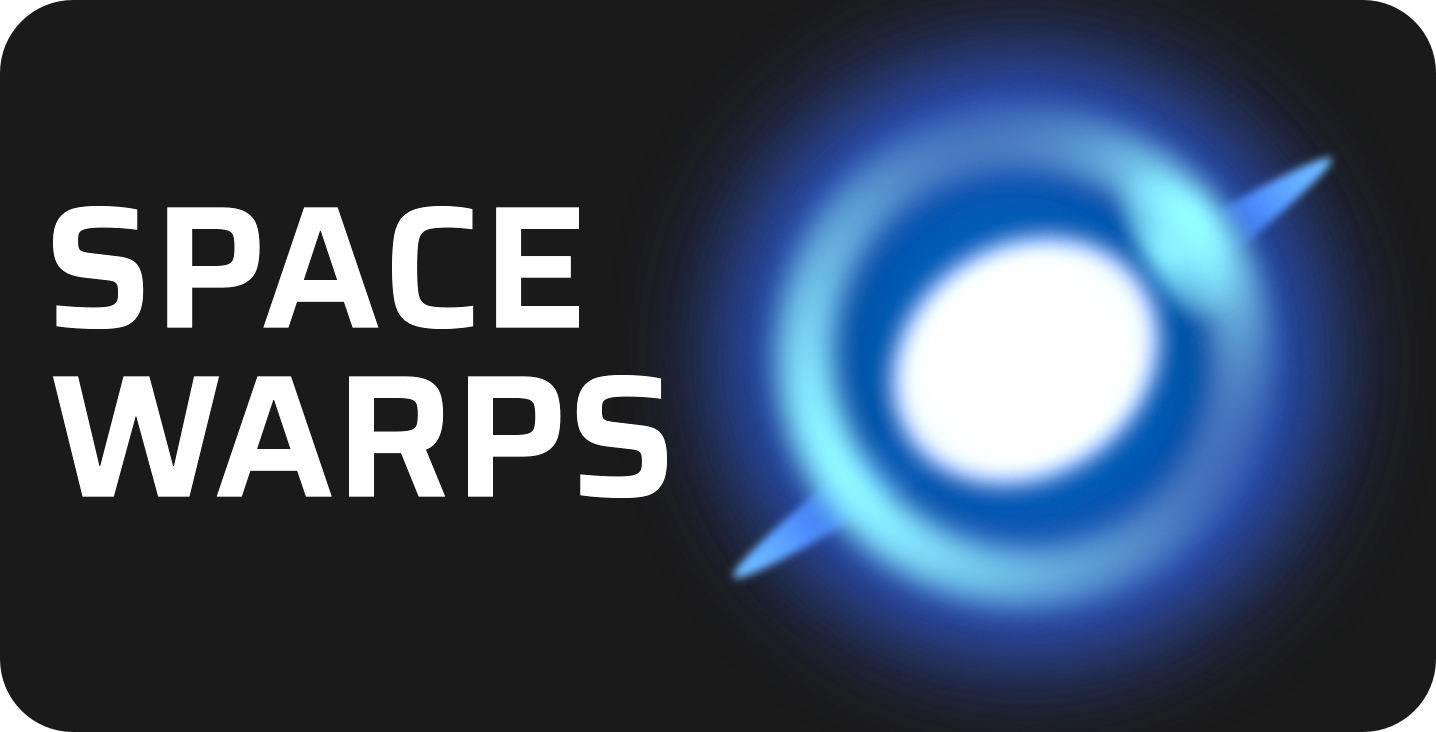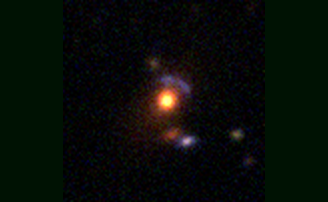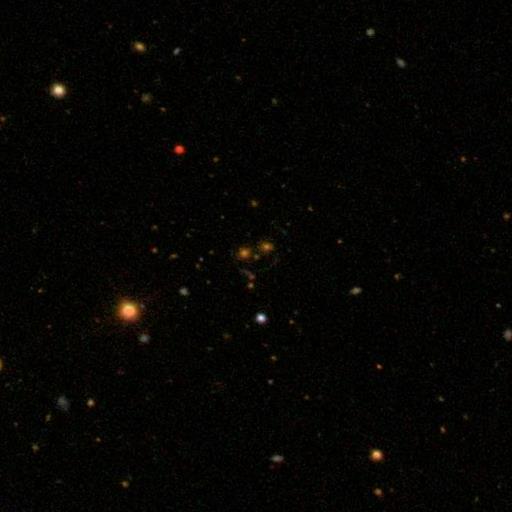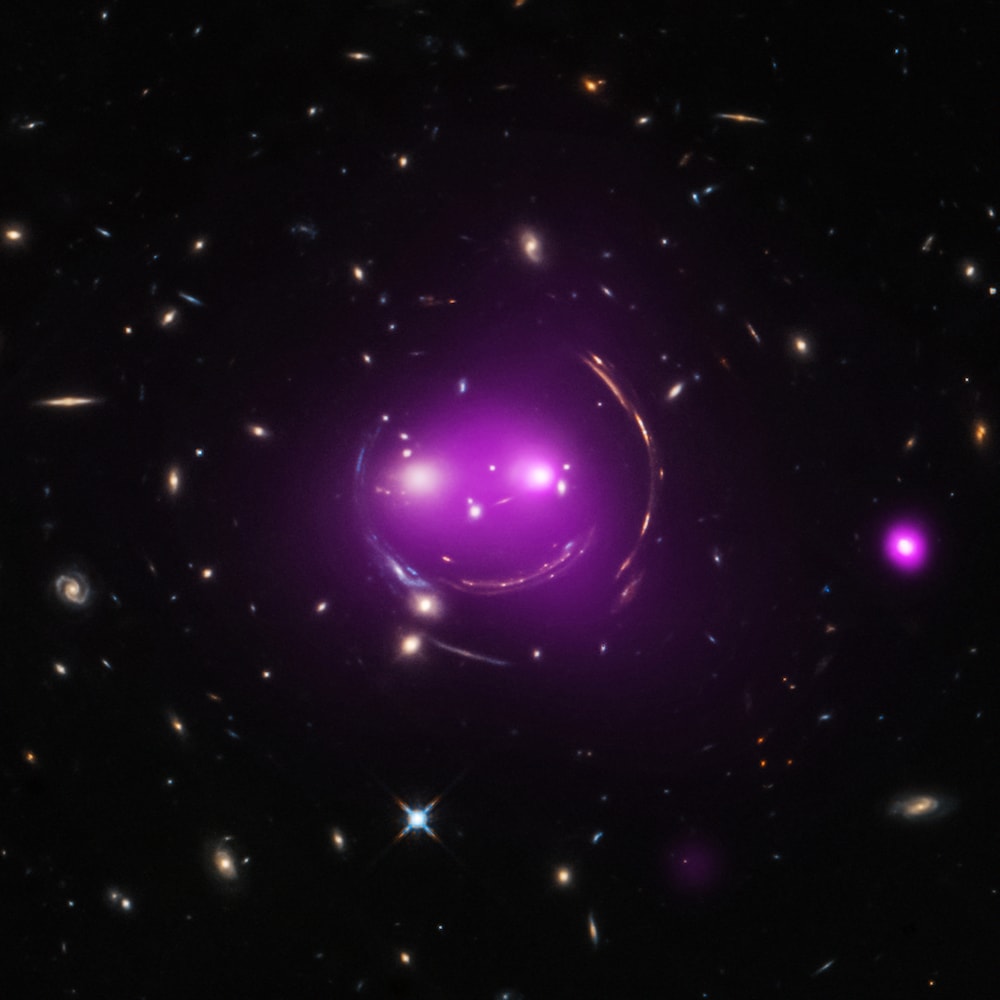Glimpses Of Galaxies Far, Far Away
11:03 minutes
 This is part of our collaboration with Zooniverse and the Space Warps research team to identify brand new gravitational lenses. Want to hunt for gravitational lenses and contribute to scientific discovery? Go to spacewarps.org to help astronomers identify these special gravitational mirages!
This is part of our collaboration with Zooniverse and the Space Warps research team to identify brand new gravitational lenses. Want to hunt for gravitational lenses and contribute to scientific discovery? Go to spacewarps.org to help astronomers identify these special gravitational mirages!
Last week we asked you to help us spot galaxies magnified by other galaxies—a phenomenon known as gravitational lensing. The project is called Space Warps, and it’s a collaboration with astrophysicists and the citizen science platform Zooniverse. Over a million galactic glimpses later, we’re ready to reveal what we found—including a galaxy more than seven billion light years away, and what appears to be a rare triple galactic lens.
[Did you know that pollens preserve better than larger plants? Take it from a paleobotanist.]

For example, this candidate gravitational lens caught the eye of @Dolorous_Edd. The blue arc is visible through an extended envelope of stars from the lens galaxy. This particular lens is about six to seven billion light years away, but researchers say that they expect to discover dozens of lenses to be located even farther away than this one.
Astronomers discovered the “Cheshire Cat” gravitational lens using lower resolution imagery from the Sloan Digital Sky Survey in 2008 (left). Then NASA’s Hubble Space Telescope and the Chandra X-ray Observatory zoomed in for a close-up (right). That’s an example of what will happen next for the most promising candidates revealed in the Spacewarps challenge—astronomers will zoom in for glamour shots that reveal more about the galaxies’ structure and composition.


In this wrap-up segment, Space Warps co-founder Aprajita Verma and Zooniverse co-lead Laura Trouille share their favorite finds, and suggest a few other projects for armchair astronomers to dig into next.
Aprajita Verma is co-founder of Spacewarps, and a senior researcher in astrophysics at the University of Oxford in Oxford, England.
Laura Trouille is Director of Citizen Science and Co-Investigator for Zooniverse. She’s based at the Adler Planetarium in Chicago, Illinois.
IRA FLATOW: This is Science Friday. I’m Ira Flatow, and as I said, last week, we challenged you to help us spot galaxies magnified by other galaxies, a phenomenon known as gravitational lensing. And the project was a collaboration with the citizen science platform Zooniverse, you know and then we called it Space Warps.
And you really stepped up to the plate and met the challenge. Because just an hour after the announcement, you citizens, astronomers already studied 30,000 galactic snapshots to determine whether a gravitational lens was hiding in there in those sparkling blue, red, and orange galactic shapes. It’s truly been a global science project because we had people helping across the US. We also had people in China, in Europe, Australia, and Russia. Like super user Dolorous Edd, or Ivan [INAUDIBLE], or [INAUDIBLE], whom we caught up with yesterday on Skype.
SPEAKER: My name is Ivan [INAUDIBLE]. I’m amazed because I never thought I would be able to participate in something quite [? this. ?] And I think it sounds great to try to discover new galaxies because I think it’s very interesting and the ability to directly help with the scientific progress.
IRA FLATOW: And now with Ivan’s help, and all of yours, we have, as I say, broken 1 million classifications. And there were some surprises, the galactic treasures lurking in that data. You can see photos up at sciencefriday.com/spacewarps. And we have invited backer experts from last week to tell us about them.
Laura Trouille, Vice President of Citizen Science at the Adler Planetarium in Chicago, and co-lead of Zooniverse. Welcome back.
LAURA TROUILLE: Thank you. Happy to be here again.
IRA FLATOW: We’re happy to have you. Aprajita Verma, who is a senior researcher in astrophysics at the University of Oxford in England and co-founder of Space Warps, welcome back.
APRAJITA VERMA: Thank you very much, Ira.
IRA FLATOW: So, Laura, run down number for us. How did our listeners do?
LAURA TROUILLE: It was amazing. So in just one week– this was a really ambitious goal we had set of a million classifications. And we did it! This morning, we passed that 1 million classification mark, and thousands of people participated, as you mentioned, from all around the world.
Right after that announcement last Friday, we had over 1,000 people on the site providing hundreds of classifications a minute. And I’m happy to say, as the lead of the web development team, our site handled that load beautifully.
IRA FLATOW: That’s great. Aprajita, let’s talk about some of the most interesting candidates. Our listeners identified some unusual galaxies lurking out there.
APRAJITA VERMA: Yeah, it’s been really quite amazing to see kind of the breadth and scale of images that we found that are really quite interesting and plausible candidates. So we’ve highlighted a few on the web pages that just kind of display how, I think, probably the most critical thing that citizens are really flexible in terms of what they discover. So human pattern recognition has been kind of very well executed in this project– something that computers don’t really do as well.
Should we talk about–
IRA FLATOW: You found a really old galaxy, didn’t you?
APRAJITA VERMA: Yes. So one of the lenses that we found basically is quite an old galaxy. It’s about 6 to 8 billion years old. So that’s about 2/3 of the age of the universe. So we’re really peering back into the distant universe.
IRA FLATOW: I also saw on the website that there was something called– I had never seen before, maybe you have– a triple lensed galaxy.
APRAJITA VERMA: So yeah. There’s basically galaxies or galaxy groups that have the potential of kind of lensing not just one background galaxy, but multiple background galaxies. And typically, we’ve only seen doubles, but they’re extremely rare. So the fact that we’ve kind of maybe identified a plausible one in this first batch of about 70,000 images is really quite remarkable.
IRA FLATOW: And Laura Trouille, do you have a favorite?
LAURA TROUILLE: I really enjoyed one that was– it’s a group of galaxies one that you see two arcs. The researcher who first commented on it and talked about it C-3PO lens because it looks like two eyes. But what I enjoyed about that discovery was the subsequent conversation between the volunteers in our– so every project has a discussion forum, and so they were chatting about it.
And one of them thought, oh, I think that’s been already seen before. And then another responded, maybe it was this one, but no, it didn’t look exactly like that. And so they confirmed that no, this truly was a new discovery of a new lens galaxy from a group of galaxies. That discussion is just fascinating.
IRA FLATOW: It is also fascinating for me as a layperson looking at all the pictures of lenses that they all look so different. I mean, is that, Aprajita, where the human spotting abilities come from? And we talked about this last week– about how no matter how good AI is, humans are still better at it.
APRAJITA VERMA: Yeah, I think that’s exactly right. So we can kind of tune these algorithms to find these things automatically. But we kind of specify what they should see. So with machine learning, we give them a training set. So really, their performance is only as good as that training set that we provide.
And since we only know about 1,000 lenses, that kind of limits the configurations and the possibilities. But as you can see from kind of the images that you’re seeing, there’s so much diversity that actually, humans are able to adapt. So they’ll take what they’ve learned from the training images.
For example, if we look at kind of the first object which on the list, which is kind of a blue multiple image quasar, we think, around a red galaxy, and you can look at the second one, which is object number 21043058– that’s also, we think, a very similar lens, but it has red point sources rather than blue.
Now for a human, that’s the kind of logical step that you see. Point sources in the blue, you see point sources in the red. They might be the same object. But for a computer or an algorithm that’s been trained, probably only on the blue, they could easily miss these kind of redder objects.
And so I think there’s a lot of strength in doing these kind of citizen science projects because not only do we find more diverse lenses, we can also use the fact that we’re finding more lenses, more unusual lenses, but also, the things that look like lenses but are not to train these machine learning algorithms. So the data set will get back or be a huge advantage.
IRA FLATOW: Fascinating. This is Science Friday from WNYC Studios. Talking about our Space Warps project with Laura Trouille and Aprajita Verma. Our number, 844-724-8255.
What we did so well on this– that you’ve actually expanded the sample set now, right? So there’s more classifying. We did it too well.
APRAJITA VERMA: I had a bit of a shock this morning when I got some citizens telling me that they were only seeing training images, and I was like, oh no, we’ve kind of run through everything that we initially thought we could manage in this first week. So very quickly, we uploaded a few more data sets, so we have another 60,000 galaxies in the mix now.
There is about 200,000 left to do as well. So there’s plenty still to be done. So please keep engaged.
IRA FLATOW: Yeah, in fact, if you go to our website, it’s sciencefriday.com/spacewarps– sciencefriday.com/spacewarps, you can see a lot of these things on there. They’re beautiful. Let’s go to William Garner in Sabine, Texas. Hi.
AUDIENCE: Hi, Ira.
IRA FLATOW: Hi, William.
AUDIENCE: How are you doing?
IRA FLATOW: Fine. Do you have a question for us?
AUDIENCE: No, sir, I don’t have a question. I was a citizen scientist who helped with the project.
IRA FLATOW: So that’s terrific. Tell us what you found. Did you see anything really interesting?
AUDIENCE: I found lots of interesting images. I maybe classified 5,000, 6,000 images. It’d be hard to pin down which one of my favorite, because just like Lauren said last week on the program, every classification counts, even the ones that aren’t of gravitational lens objects.
IRA FLATOW: Wow. Wow. And did you enjoy the experience?
AUDIENCE: Oh, yes sir. I definitely enjoyed it. Doing citizen science gives you such a rush of– it’s a mixture of pride and accomplishment, knowing that you’re contributing to this grand quest humans are on to understand the universe around us.
IRA FLATOW: All right, let me see if I can get another member of our citizen scientists. Paula Anderson in Philadelphia. Hi, welcome.
AUDIENCE: Hi, great to be here.
IRA FLATOW: Tell us what your experience was like.
AUDIENCE: Well, I was listening to the program last week, and this was the first time I heard about the Space Warps program. And I went, and I was actually out with my kids, and I made a note on my phone. And when I got home, I downloaded the universe app, and I was able to start going through images almost right away while I was in the room with my kids. It was great, because I didn’t have to retreat to my computer.
IRA FLATOW: All right, thank you very much for taking the time to talk to us today. That’s about all the time we have. I want to thank my guests, Laura Trouille, Vice President of Citizen Science at the Adler Planetarium in Chicago, and Aprajita Verma, Senior Researcher in Astrophysics, University of Oxford in England. And both of my guests are co-founders of Space Warps.
Thank you for joining us, and congratulations on a really successful effort. It’s been great working with you.
LAURA TROUILLE: Thanks so much.
APRAJITA VERMA: Yeah, thank, Ira. And thanks to all the citizens.
IRA FLATOW: Thanks to all of them. One last thing before we go. I’ve got a pop quiz for all you New York listeners. What has science, beer, and yours truly making bad science puns all night? It’s Science Friday Trivia. So join us next Wednesday, May 9, at the Bell House in Brooklyn for a night of geeky science trivia. Some of our news roundup regulars will be there in this battle of science wits. We want you to join us too.
So you can get more info and tickets at sciencefriday.com/trivia. That is going to be next Wednesday, May 9, at the Bell House in Brooklyn. sciencefriday.com/trivia. We hope to see you all there.
We had technical help and engineering help from Rich Kim, Sara Fishman, and Jack Horowitz. And of course, we’re here all week. All week on social media. We’re on Facebook, Twitter, Instagram, all over the place. And one last wish, happy Cinco de Mayo if you’re celebrating. I’m Ira Flatow in New York.
Christopher Intagliata was Science Friday’s senior producer. He once served as a prop in an optical illusion and speaks passable Ira Flatowese.